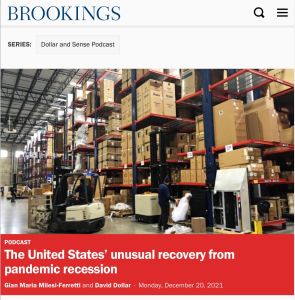Join getAbstract to access the summary!

Join getAbstract to access the summary!
Gian Maria Milesi-Ferretti and David Dollar
The United States’ unusual recovery from pandemic recession
Brookings Institution, 2021
What's inside?
A number of factors explain America’s atypical rebound from the coronavirus-induced recession.
Recommendation
Major nations are turning the economic corner from the coronavirus pandemic, albeit at different rates. The United States is well ahead of its developed-country peers, thanks to robust fiscal and monetary policies and strong private consumption, but all is not uniformly positive, as economists Gian Maria Milesi-Ferretti and David Dollar explore in this instructive episode of the Brookings Institution podcast Dollar and Sense.
Summary
About the Podcast
Gian Maria Milesi-Ferretti is a senior fellow at the Brookings Institution, as is David Dollar, who hosts the trade and economics podcast Dollar and Sense.

























Comment on this summary